An art lover’s guide to Buenos Aires, where ‘creativity never sleeps’
Explore the museums, galleries, experimental spaces and events, including Latin America’s longest-running art fair, that make Buenos Aires a must-visit art city
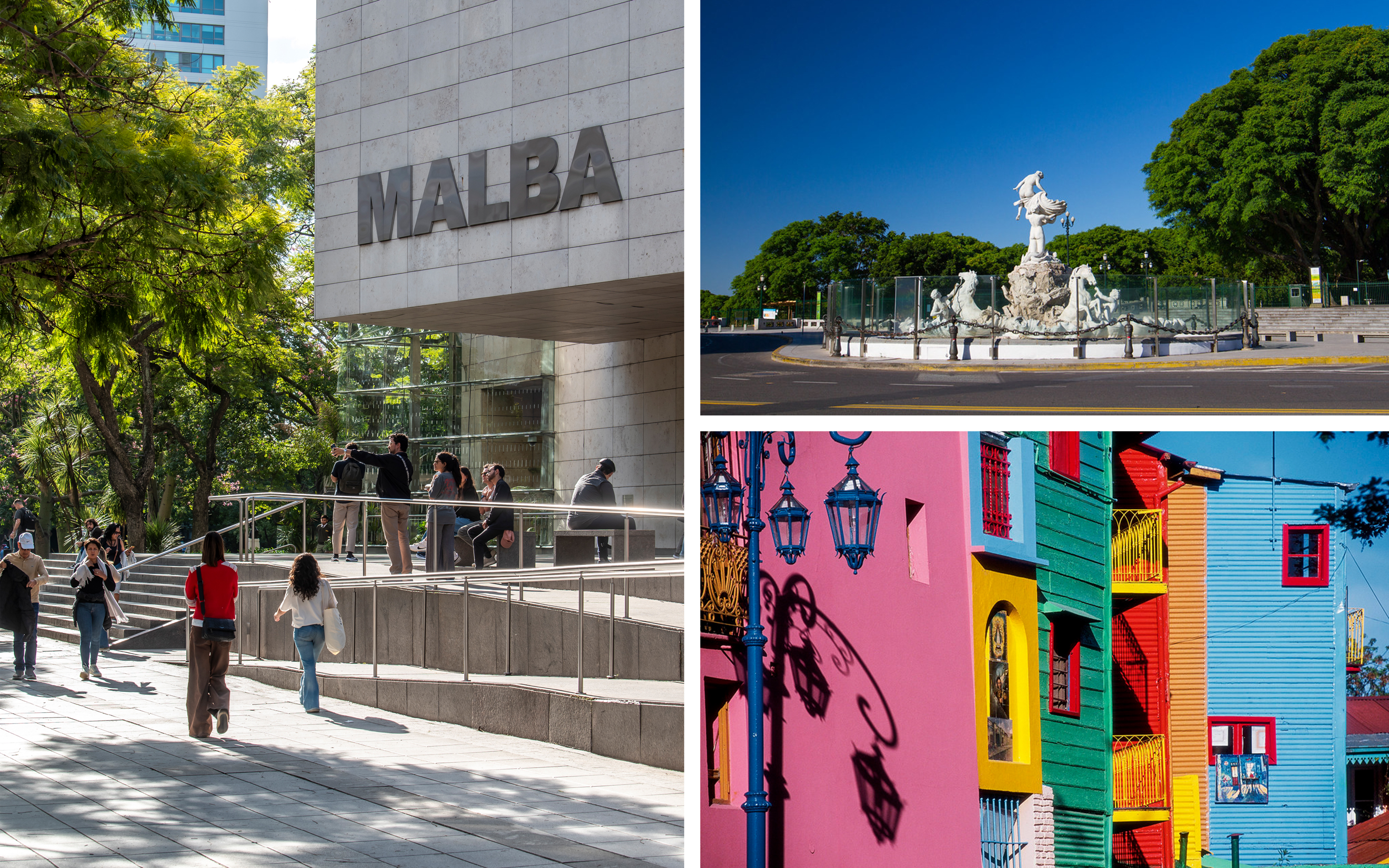
Clockwise from left: Exterior view of the Museo de Arte Latinoamericano de Buenos Aires. Courtesy of MALBA. Fuente de las Nereidas by Lola Mora. Courtesy of the Buenos Aires City Tourism Board. El Caminito. Courtesy of the Buenos Aires City Tourism Board: turismo.buenosaires.gob.ar
It’s hard to think of a city with as many nicknames as Buenos Aires has. They range from ‘the Paris of the South’ and ‘Tangopolis’ (the city of tango) to ‘Queen of the Plate’ (referring to its location on the southwestern shore of the River Plate estuary). In the title of one of their classic songs, the Argentinian rock band Soda Stereo described Buenos Aires, in turn, as ‘the city of fury’.
One needn’t examine any of these monikers — or the many others — too closely. Together they suggest a city of great variety, one with multiple claims to fame.
Founded in 1536, Buenos Aires became the capital of the independent nation of Argentina in the 19th century. The city is divided into 48 barrios (neighbourhoods), each with its own distinct character.
‘For me, Buenos Aires [is] as eternal as water and air,’ wrote the author Jorge Luis Borges, one of the city’s most famous sons, in the 1920s. It has certainly been around long enough to develop an abundance of first-rate museums — which, along with private foundations and commercial galleries, contribute to a thriving art scene.
Featuring work by Xul Solar, León Ferrari, Guillermo Kuitca and other Argentinian artists from the mid-20th century to the present day, the Museo de Arte Moderno de Buenos Aires (MAMBA) houses a collection of 7,000 pieces. Courtesy of Museo de Arte Moderno de Buenos Artes. Photo: Guido Limardo
Moderno y Metamoderno, on view through January 2026, highlights the important collections that make up MAMBA’s heritage. Courtesy of Museo de Arte Moderno de Buenos Artes. Photo: Josefina Tommasi
A fine time to experience that scene is during the month of August, which culminates in arteba. Launched in 1991 as a platform to promote contemporary Argentinian art, this is Latin America’s oldest art fair. This year’s edition will feature booths from 65 galleries at the Centro Costa Salguero exhibition centre from August 29 to 31.
‘Creativity in this city never sleeps,’ says Victoria Noorthoorn, director of the Museo de Arte Moderno de Buenos Aires (MAMBA). ‘When I travel internationally, I see lots of impressive art, but never anything better than what’s being made in Argentina’.
Featuring work by Xul Solar, León Ferrari, Guillermo Kuitca and other Argentinian artists from the mid-20th century to the present day, MAMBA houses a collection of 7,000 pieces. It hosts many temporary exhibitions too, though Noorthoorn notes that ‘the list of artists we give solo shows to never catches up with the list of artists we want to give shows to. It’s impossible to keep up with the scope of creation here’.
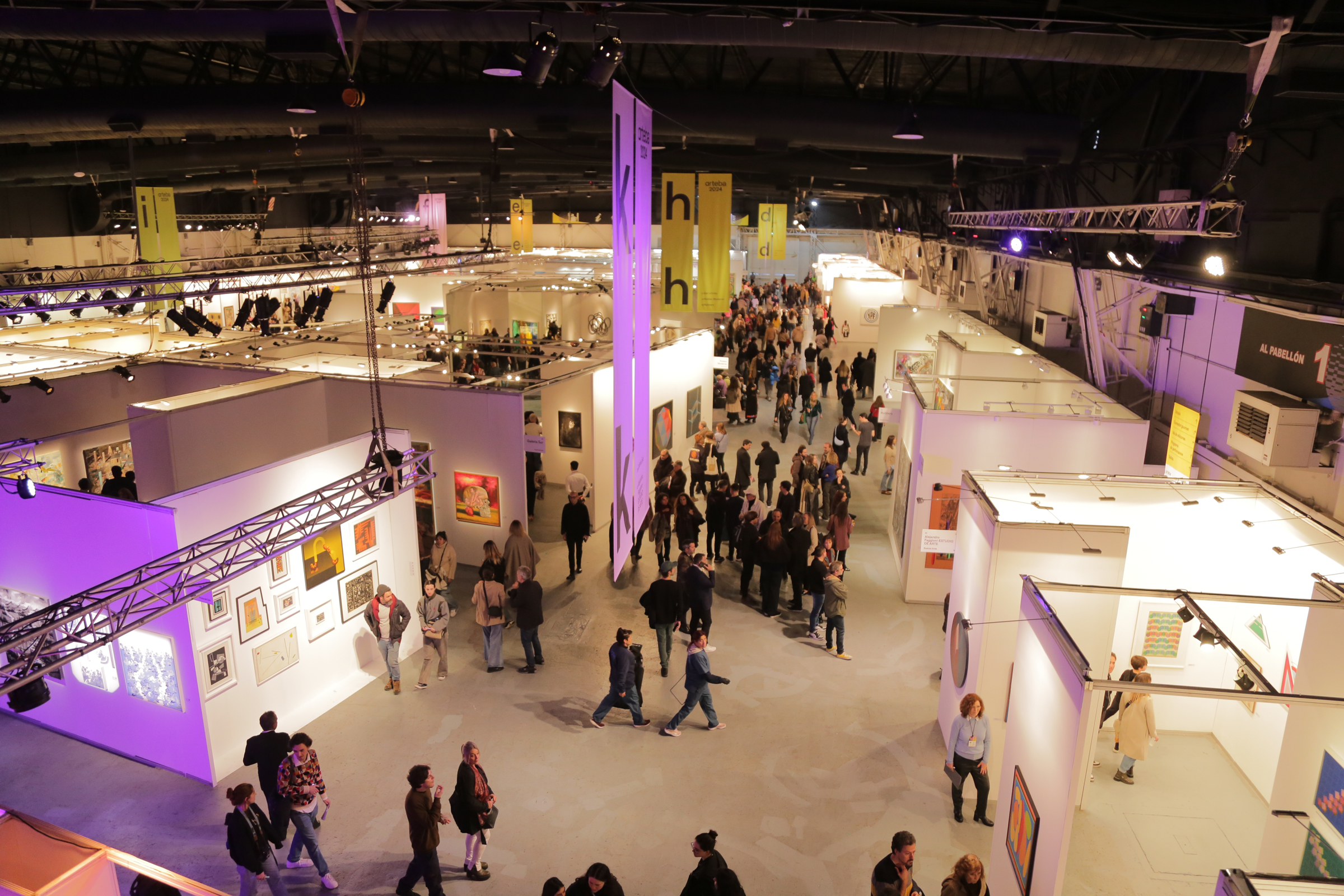
Visitors explore Latin America’s oldest art fair, arteba, 2024. Courtesy of Arteba Fundación
Amongst MAMBA’s current slate of exhibitions are solo shows dedicated to the pop artist Dalila Puzzovio and the photographer Jorge Miño.
The museum is located in the historic barrio of San Telmo, one of four neighbourhoods we explore below — and recommend to any art lover visiting Buenos Aires.
This is by no means intended as a comprehensive guide: other barrios boast artistic offerings too. Rather, it is a suggestion of how to make the most of one’s time in the Argentinian capital, especially if that time is limited.
Buenos Aires is a large city, perhaps best negotiated by taxi or Uber. Most individual barrios are walkable, however, and the four highlighted below each have an interesting mix of art venues clustered together.
La Boca
The most storied barrio in Buenos Aires, La Boca is famous for being the purported birthplace of tango as well as the home of the Boca Juniors football team, where Diego Maradona made his name. It’s also where myriad Italian immigrants, mostly from Genoa, settled during Argentina’s boom years in the late 19th and early 20th centuries.
The colourful pedestrian street El Caminito is testament to La Boca’s history as a bustling port. Courtesy of the Buenos Aires City Tourism Board
Exterior view of Fundacion Andreani. Courtesy of Fundación Andreani. © Gian Paolo Minelli
Many worked in La Boca’s bustling port. Having constructed homes from corrugated iron, they painted them in a patchwork of brilliant hues, making use of leftover paint they found on ships. The colourful pedestrian street El Caminito is testament to that era. Often described as an ‘open-air museum’, it is today one of the most Instagrammed spots in Buenos Aires.
La Boca went into decline over the course of the 20th century, after the city had new ports built (first Puerto Madero, then Puerto Nuevo). The opening of the Fundación Proa art centre by the waterside in 1996, though, helped herald a renaissance and turn the barrio into an art hub. Next door, one can visit Fundación Andreani, which showcases avant-garde and digital work.
Barro gallery occupies an old warehouse and represents some of Argentina’s hottest contemporary artists — such as Mondongo, La Chola Poblete and Gabriel Chaile (who produced his country’s pavilion at 2022’s Venice Biennale).
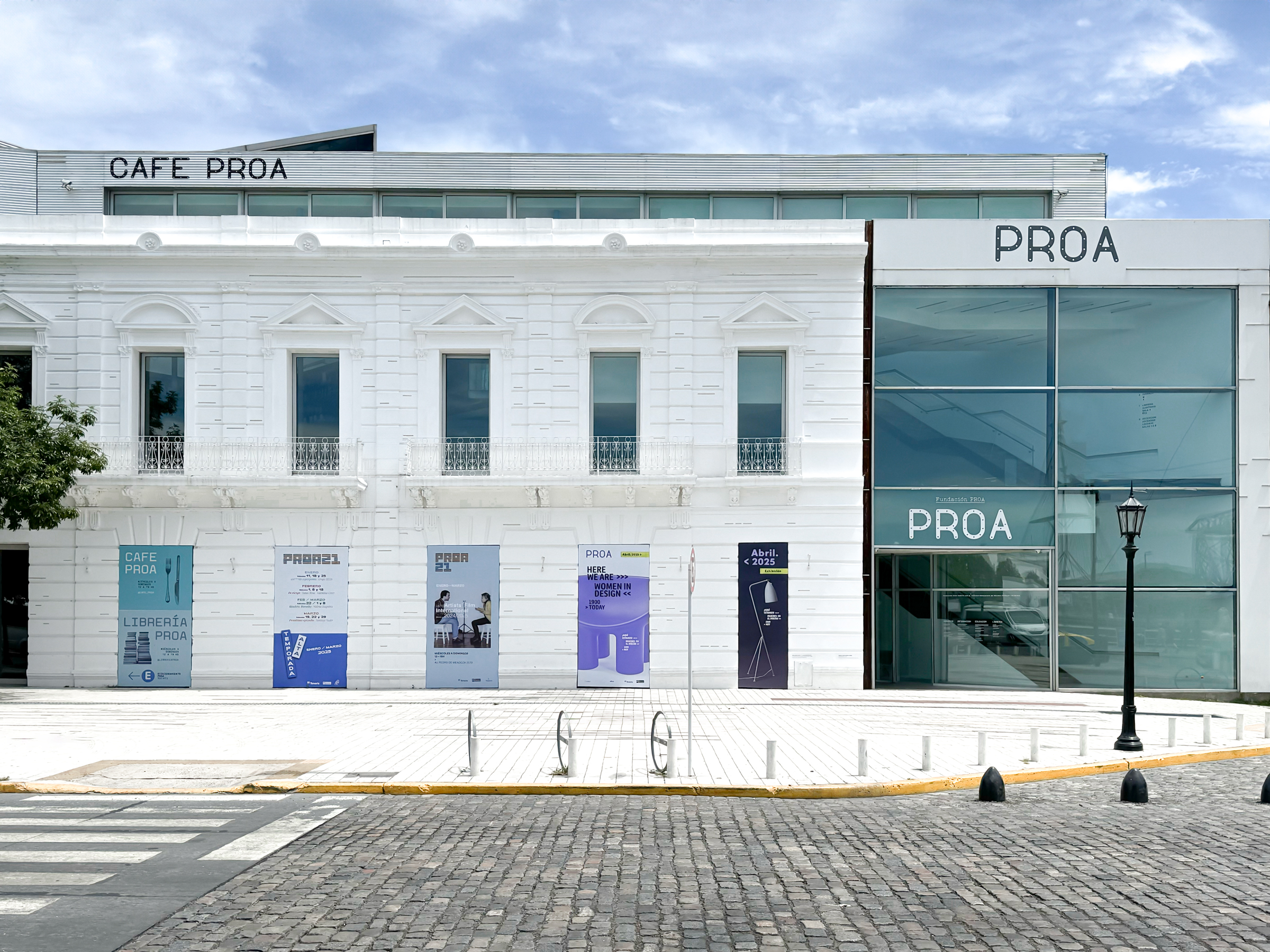
Founded in 1996, Fundación Proa helped turn La Boca into an art hub. Image Courtesy of Fundación Proa
On the other side of the street from Barro is Fundación Larivière, a repository of 20th-century Latin American photography.
Finally, no trip to La Boca is complete without visiting the Benito Quinquela Martin Museum, dedicated to the eponymous mid-20th-century painter. A lifelong denizen of this barrio, Quinquela took port life as his subject, evocatively capturing the bustle of the ships and the hardworking dockhands attending them. ‘La Boca is my office, my refuge and my model’ he said.
San Telmo
Another barrio with a fascinating past is San Telmo. Centrally located, this used to be home to Buenos Aires’s rich and powerful, who built themselves large mansions — only for an outbreak of yellow fever in 1871 to send them fleeing to the city’s north. Many of the houses were subsequently converted into tenements, into which poorer citizens and immigrants moved. The area developed a bohemian air, which still can be felt today as you walk its cobblestone streets and have a coffee in one of its old-school bares notables.
MAMBA occupies a converted cigarette factory and is gearing up for its 70th anniversary in 2026. Right next door is the Museum of Contemporary Art in Buenos Aires (MACBA), a private museum founded by the financier-collector Aldo Rubino and focused primarily on geometric abstraction.
San Telmo also has a flourishing gallery scene. ‘There’s a circuit of contemporary art spaces one can visit, all of them within a few blocks of each other,’ says Federico Curutchet, the co-director of one such space, W—gallery. ‘Each gallery has something to offer individually, but we complement one another well too.’
San Telmo’s W—gallery boasts four large-scale exhibition spaces and a garden. Courtesy of W—gallery. © 2025, Javier Agustín Rojas
Cristina Schiavi’s solo exhibition Mundo fofo, on view at W through August 2025. Courtesy of W—Gallery. © José Luis Morales
W is currently hosting solo shows by three Latin American artists at once, including one by rising Argentinian star Florencia Sadir. Its neighbours include Linse gallery, Calvaresi, Piedras gallery, El Mirador and Nora Fisch. The last of these is housed in a four-floor building from the 1920s, which also boasts a rooftop for parties and performances. Amongst the exhibitions on there now is one devoted to Rosa Chancho, a quirky art collective who have been known to make crowd-surfers out of art-fair visitors.
Puerto Madero
Like La Boca before it, Puerto Madero fell on hard times once its port became too small to accommodate increasingly large cargo ships. Towards the end of the 20th century, however, an ambitious and hugely successful revitalisation plan was launched, which preserved the charm of the old dock area while also adapting it for high-end residential, commercial and recreational purposes.
Puerto Madero is now one of the most expensive spots for real estate in Latin America. The artistic offering is not insignificant either. In 2008 the executive and philanthropist Maria Amalia Lacroze de Fortabat opened a museum, designed by the Uruguayan architect Rafael Viñoly, to house her impressive holdings of Argentinian and international art. It shows work by the likes of J.M.W. Turner, Marc Chagall and Gustav Klimt, as well as a portrait by Andy Warhol of the Fortabat Collection’s founder herself.

The Amalia Lacroze de Fortabat Collection, designed by the Uruguayan architect Rafael Viñoly, houses the eponymous executive and philanthropist’s impressive holdings of Argentinian and international art. Photo: Jeffrey Isaac Greenberg 19+ / Alamy
With its mix of historic and modern buildings, plus waterfront views, Puerto Madero is popular with walkers, joggers and cyclists. They come across plenty of outdoor art — most notably Santiago Calatrava’s huge footbridge, Puente de la Mujer, representing a couple dancing tango. The bridge has a turning mechanism, which allows it to swing open and let ships pass.
The barrio is also home to one of Argentina’s most controversial art works: Fuente de las Nereidas by Lola Mora. This monumental marble fountain depicts the birth of Venus attended by various mermaids and mermen. It was created for the city of Buenos Aires early in the 20th century. At the time, it was deemed offensive by much of society due to its nude figures. After 15 years, it was moved from a prime location near the Casa Rosada presidential palace to unloved, unvisited Puerto Madero. Ironically, given the barrio’s recent change in fortunes, the fountain is now much seen — and much admired.
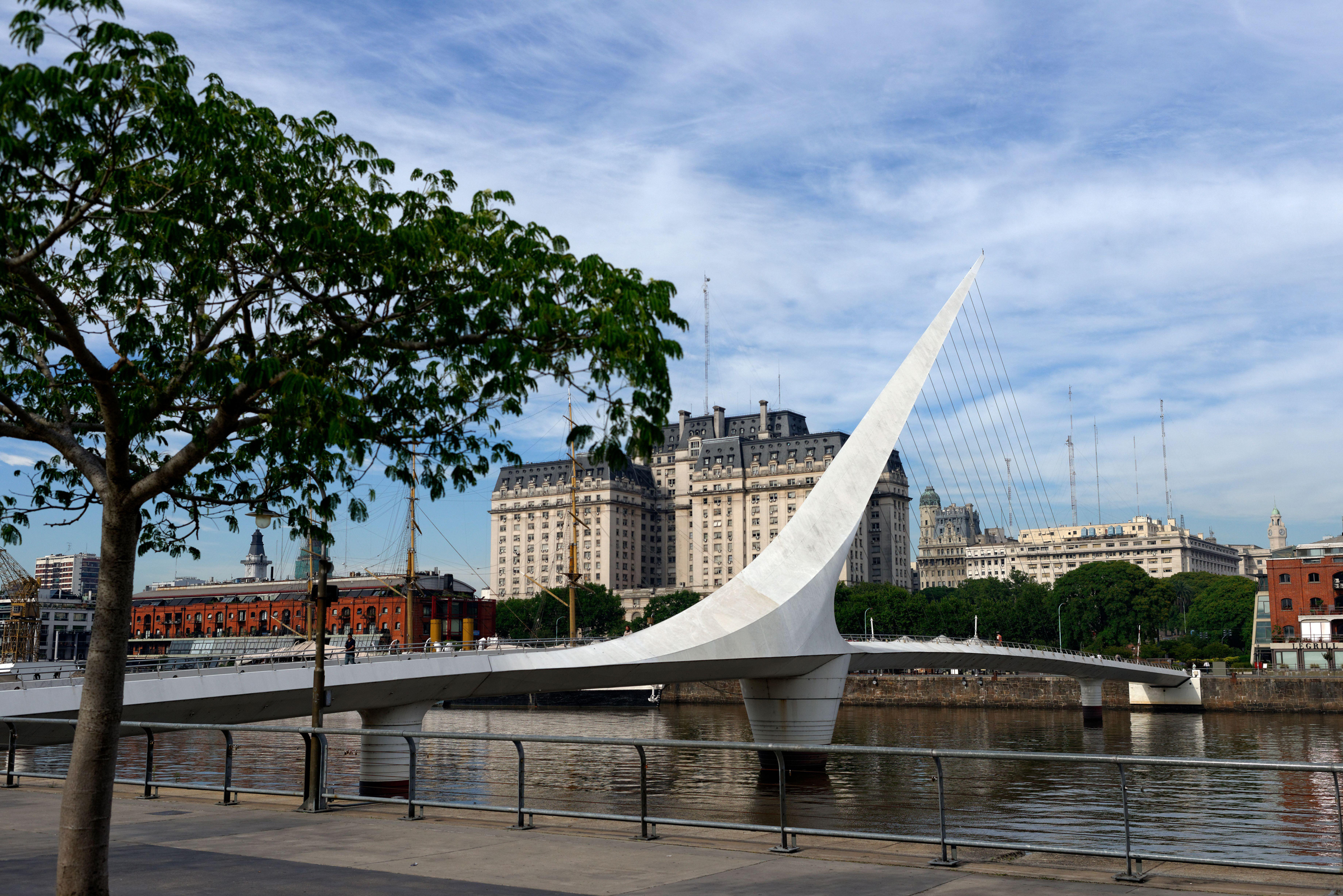
Santiago Calatrava’s huge footbridge, Puente de la Mujer, in Puerto Madero suggests the sweeping movement of a couple dancing tango. Photo: Stephen Lloyd Argentina / Alamy
Palermo (+ Villa Crespo)
Palermo is Buenos Aires’s largest barrio, filled with green spaces, hip fashion shops and boutique hotels — as well as first-rate museums. The Museo de Arte Latinoamericano de Buenos Aires (MALBA) is unmissable. Founded by the Argentinian businessman and art collector Eduardo Costantini in 2001, it focuses on Latin American art from the early 20th century to the present day, with a collection featuring standout works by the likes of Frida Kahlo, Diego Rivera, Wifredo Lam and Tarsila do Amaral.
Located nearby is the National Museum of Decorative Art, housed in an old aristocratic mansion. It’s renowned for a collection of furniture, sculpture, ceramics, paintings and tapestries from the 16th to 19th centuries, not to mention a lovely courtyard café called Croque Madame.
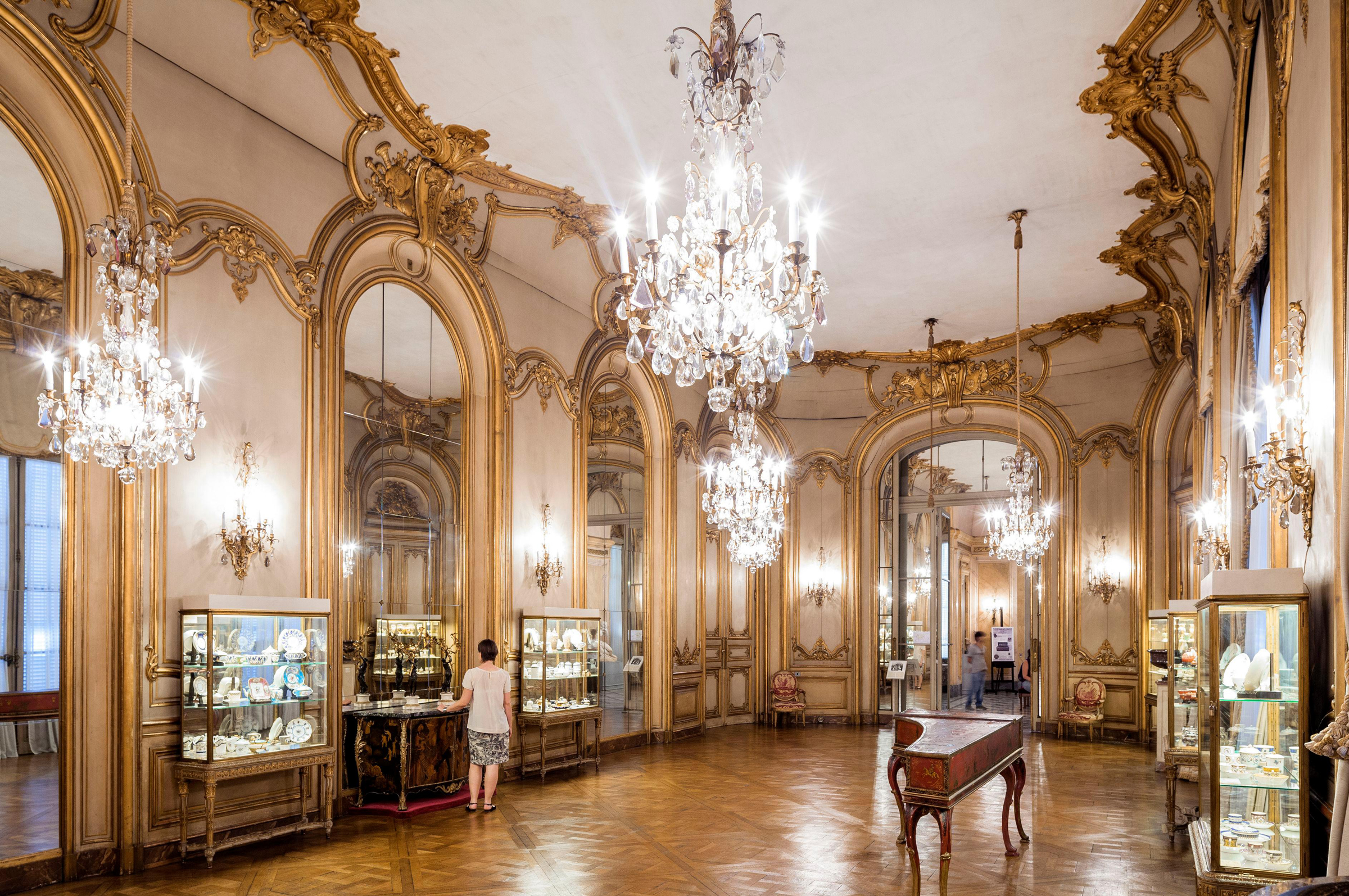
The National Museum of Decorative Arts is renowned for its collection of furniture, sculpture, ceramics, paintings and tapestries from the 16th to 19th centuries. Photo: Hemis / Alamy
Argentina’s most visited museum is the Museo Nacional de Bellas Artes, its flagship fine arts institution. It is actually just across the barrio border in neighbouring Recoleta, rather than in Palermo, but no guide to Buenos Aires’s art scene would be complete without it. Its collection of 12,000 works ranges from Old Masters to the Impressionists — and also includes a sweep through Argentinian art of the 19th and 20th centuries, by the likes of the cubist Emilio Pettoruti and the expressionist Raquel Forner.
A quick word about another barrio neighbouring Palermo: and that’s hipster Villa Crespo. A host of contemporary art galleries have opened there over the past decade. None more significant than Ruth Benzacar, which has been championing established and emerging Argentinian artists for 60 years. The gallery moved into a hangar-size space in Villa Crespo in 2016 and is currently showing an exhibition by Eduardo Basualdo, an artist renowned for his enigmatic sculptures and installations.
Installation view of Liliana Porter, Reparar el piano y otros compromisos, 2015. Courtesy Ruth Benzacar Gallery. ©2025, Javier Agustín Rojas
A view of the archives at Ruth Benzacar. Courtesy Ruth Benzacar Gallery. ©2025, Javier Agustín Rojas
Sign up for Going Once, a weekly newsletter delivering our top stories and art market insights to your inbox